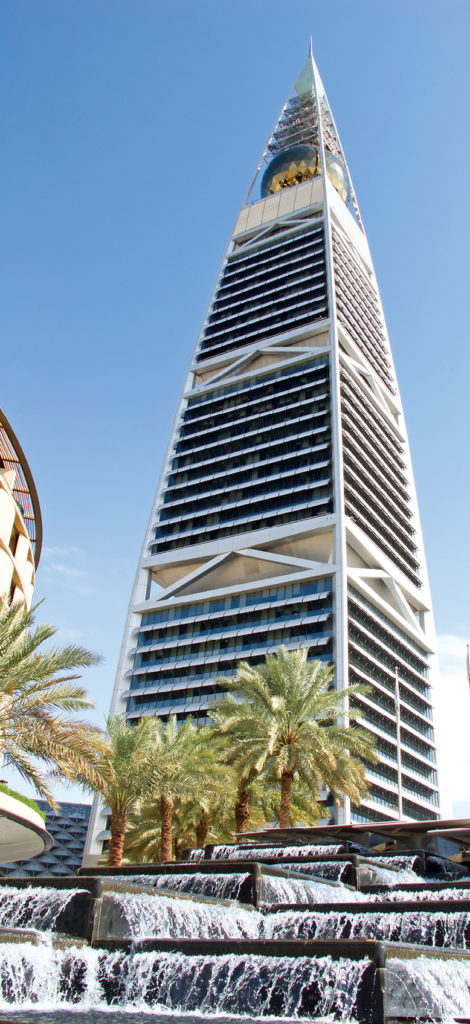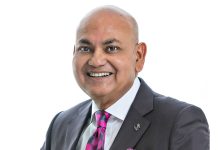With a new king, a reshuffled cabinet, and a carefully crafted plan in place, the Kingdom of Saudi Arabia is ready to open up to the wider world. In a decidedly low-key manner, the massive Tadawul Stock Exchange on June 15 granted qualified foreign investors (QFIs) access to its often hectic and always dynamic trading floor.
However, only those with at least $5bn under their belt and five or more years of experience need apply for permission to directly trade equities on Tadawul – the most liquid and largest of the Middle East exchanges with a market capitalisation of well over $580bn, 169 listed companies, and trade volumes in excess of $2bn daily. Besides equities, Tadawul also trades corporate bonds, sukuk (financial certificates), and ETFs (exchange traded funds).
According to insiders, American investment bank Goldman Sachs is in the process of preparing a formal application to the Capital Market Authority (CMA), the exchange’s regulator, for QFI status. Goldman Sachs manages over a trillion dollars in investor funds. Last month, HSBC Holdings became the first foreign investment bank to obtain permission to directly execute trades on Tadawul.
The relaxed rules for foreign investors are meant to improve the market’s overall quality. Though by no means comparable to seesawing Chinese stock markets, Tadawul is not for the faint of heart. The exchange’s All Shares Index (TASI) reached an all-time high of 16,712 in 2005 before taking a nosedive to 4,802 in 2008. In the years following, the TASI hovered around the 6,500 mark to resume its upward trend in 2013, breaking the 9,000 barrier earlier this year.
Clash of Investor Cultures
Volatility is a Tadawul hallmark. So is profitability. Investors with long time horizons have fared exceptionally well as have those who did their homework properly: Tadawul is a market where research pays off big time. The Saudi market struggles with realities not entirely unlike the Shanghai and Shenzhen exchanges: a predominance of smaller investors whose investment decisions are mostly driven by sentiment, rumours, and newspaper headlines rather than by research and reason. Tadawul has over five million active investors registered at its central depository of whom about 4.3 million are private individuals chasing quick profits.
The recent upheavals on the two major Chinese exchanges have also been blamed on retail investors entering and leaving the market by droves as optimism evaporates for no apparent reason and doomsayers carry the day. In the case of China, the numbers are simply stunning. Deutsche Bank analysts discovered – much to their own surprise – that as indices jumped up, fully two thirds of new investors entering the market were high school dropouts. Another six percent of newbie investors could be classified as illiterate.
Before the Chinese markets succumbed to the forces of gravity, up to 170,000 new trading accounts were being opened every single day. However, the indices’ steep fall has brought that euphoria to an abrupt end. Hordes of day traders are now looking for regular jobs. In about a month’s time, both Chinese exchanges lost $3.25tn in value – more than the market cap of the Euronext Paris exchange ($2.9tn).
Whereas for the past eight years Tadawul has managed to calm the waters and put into place a solid foundation on which to build sustainable future growth, the continued presence of large numbers of retail investors engaged in spot trading was deemed too great a risk. Opening the floor to direct trading by large foreign investors is seen as one way of reducing Tadawul’s volatility. It also may herald a clash between investment cultures. Retail investors who usually buy and sell on the same day are responsible for about 90% of daily trading volume and jointly own more than a third of the shares.
Attention Span
As it stands, the Tadawul retail segment is significantly higher than that of most other major exchanges, a fact largely ascribed to the lagging development of the Saudi fund management industry. The typically short attention span of retail investors is diametrically opposed to the interests of institutional and other large investors who base their decisions on solid fundamentals and future earning potential, looking often years into the future.
According to Ali Al-Nasser who manages the MENA Horizon Fund for the Duet Group from Dubai, the Saudi market must move away from its short-term outlook: “Things without any economic value such as stock splits still cause quite a stir and we are lucky when retail investors look as much as a year ahead when acquiring shares. We, on the other hand, take a five-year or even longer view.”
Foreign investors venturing onto Tadawul may find stock prices inflated as small traders drive up prices in anticipation of their arrival. By using such different yardsticks, both groups of investors will need plenty of time to converge their interests. “It is a process that could take years and may even be preceded by a further divergence,” says Mr Al-Nasser.
Tadawul management and the Capital Market Authority did not wait for another crash to happen and moved decisively to underpin the Saudi stock market by inviting large outside investors to participate. Tadawul is one of the world’s largest major markets to open up.
The liberalisation – long in the making – replaces a rather unwieldly system of promissory notes and equity swaps that until now scared most foreign investors away from the Saudi market, effectively reserving its bounty to local investors. Funds from foreign investors accounted for only slightly over one percent of trades by value. Only 1.4% of shares issued by Tadawul-listed companies is owned by non-residents.
Former CEO Abdullah S Alsuweilmy of the Riyadh-based exchange explains that the Tadawul represents about half of the total GCC (Gulf Cooperation Council) equity market and over ninety percent of its traded value.
While investors and analysts across the globe welcomed the relaxing of the restrictions imposed on foreign investors, some also deplored the Capital Market Authority’s decision to leave some significant constraints in place. Those who believed that Tadawul was set to become the hottest emerging market – and a scene of get-rich-quick action – could barely contain their disappointment.
However, a complete free rein for foreign investors was never seriously contemplated by the CMA. Under the new regulations, qualified foreign investors (QFIs) may not hold more than 5% of the shares of any listed company while all foreign investors – including residents, non-residents, and equity swaps – may jointly not own more than 49% of any listed company. Currently, foreign investors hold only about $8bn in Saudi stock.
Enhanced Sophistication

CMA officials do expect increased foreign participation to further enhance the sophistication of the market and contribute towards its stability. Tadawul’s welcoming of international investors will also allow Saudi companies to draw on outside expertise in corporate governance as new shareholders gain a seat and a voice at the table.
Most of the kingdom’s investment banks, stock market brokerages, and other financial intermediaries have already embarked on an expansion drive in order to broaden and deepen their coverage of the market in order to satisfy the needs of institutional investors. A redoubling of research efforts is also underway with markets analysts who can couple local knowledge to international best practices in high demand and commanding top wages.
While foreign investors are cautiously making overtures to Tadawul, a bull run has failed to materialise – much to the relief of the market’s regulatory authorities who insist that their relaxing of rules must result in an improvement of Tadawul’s stability and maturity. The CMA has been upfront in its expectations: the agency wishes to encourage a rebalancing of the Saudi stock market by increasing the weight of institutional investors and thus reduce volatility.
Already since 2008, when foreign investors were first allowed to modestly partake via the equity swap framework, Tadawul has benefited from greater price stability with small players becoming net sellers. The CMA’s strategy of cautiously and carefully steering Tadawul towards larger volume transactions driven by institutional investors has paid off with the two investor classes moving in opposite directions: private investors are slowly exiting the market as price swings become less frequent and pronounced, with long-term capital taking over the vacated positions.
Qualified foreign investors and GCC investors, who already enjoyed privileged access to Tadawul, currently account for slightly under 7% of total market capitalisation. According to Adel Saleh Al-Ghamdi, CEO of the Saudi Stock Exchange, the increased role awarded to foreign investors is but the first step of a much longer journey: “Over the medium to long term, this journey will benefit all stakeholders from investors and listed companies to authorised persons and qualified foreign investors. As the market landscape improves, not only can the Saudi Stock Exchange look to take its rightful position in the global market but also act as a means to develop, promote, and fuel the vibrant Saudi economy and its future prospects as a whole.”
Mr Al-Ghamdi pointed out that the kingdom is already home to a number of world class corporations. He sees Tadawul’s role as one that facilitates and encourages companies to strike out and fully exploit their potential: “The participation of highly experienced international investors can drive this process and help more Saudi businesses to become leaders.”
Economy Booming
The behemoth of the Gulf Cooperation Council (GCC) – the regional political and economic union that united all Arab countries lining the Arabian Gulf with the exception of Iraq – the Kingdom of Saudi Arabia (KSA) represents nearly half of the GCC’s $1.8 trillion economy. The country ranks 19th on the list of the world’s largest economies.
Amongst exchanges in emerging markets, Tadawul vies with Mexico’s Bolsa for the seventh place by transaction volume. However, analysts are particularly fond of the Saudi exchange for its well-balanced diversity – spread over fifteen classes. Contrary to popular perception, Tadawul is not all tilted towards petrochemicals. The exchange offers solid and actively traded listings representing the full spectrum of economic activity in the kingdom with a strong presence of the retail, financial services, and telecom sectors – segments widely expected to do exceptionally well in the near future.
In a sign that the kingdom can cope with lower oil prices, economic growth accelerated to an inflation-adjusted 2.4% in the first quarter of this year, up from 1.6% in Q4 2014. Heavy spending by the state and a robust performance by the private sector amply offset the 40-50% drop in oil prices.
Jason Tuvey, Middle East analyst at Capital Economics in London is impressed: “The data add to the evidence that the Saudi economy has weathered the storm created by lower oil prices relatively well so far. There are absolutely no signs that the economy is collapsing, as some had initially feared.”
Accounting for 40% of the kingdom’s economic output, the oil sector returned to growth and was up an annualised 1.8% in the first quarter. Q4 2014 had oil still down 0.7%. The recovery comes at an opportune moment. Economists have been wondering for how long the state is willing to prop up the economy with its local version of quantitative easing.
State Spending Patterns
Curiously, the extra spending was more inspired by the Arab Spring revolts that rocked other parts of the Middle East than by the slump in oil prices that followed. Saudi state outlays have increased by 60% since 2008. The additional cash was mostly spent on vast programmes aimed at meeting social demands for housing, education, and employment. The more traditional QE effect of the supersized budget was merely considered an added bonus.
However, the government in Riyadh is giving clear signs that it wants to reduce its spending spree now that the private sector has picked up steam and first-quarter growth may have to be revised upwards as additional data streams in.
Cheap oil – defined as any price level south of $80 per barrel, the KSA’s break-even point – did leave a gaping hole in the state’s finances. The International Monetary Fund (IMF) projects the budget deficit to hit the 20% of GDP mark, or around $150bn. State spending is slated to be reduced by slightly under 18% this year to $241bn. Farouk Soussa, chief economist for the Middle East at Citi, expects cheap oil to last a little while longer and says it will inevitably lead to increased calls for structural economic reforms in the kingdom: “It is not enough to temporarily slash spending on projects. Deeper reforms of the public finances and of the economy are needed.”
The 2015 budget forecasts a $38.6bn deficit though pundits point out that Saudi Arabia traditionally overspends by up to 25%. Mr Soussa said the government will eventually be forced into broadening its currently narrow tax base that derives up to 90% of its revenue from oil. “The onus of growth is already shifting to the private sector. A next step may entail the rationalisation of social spending.” Mr Soussa notes that with depressed oil prices, a failure to make progress on reforms is no longer sustainable: “2015 needs to be the year in which the pace of economic reform picks up.”
The opening up of Tadawul dovetails nicely with the reform agenda long talked about in Riyadh but never before implemented. Some foot-dragging may, however, still be expected. Not only do Saudi authorities tend to move at a glacial pace and with great caution, they also have the financial firepower to keep funding generous social programmes and large-scale construction projects.
The huge debt accumulated in the late 1990s – when oil dropped to a low of barely $20 per barrel – have now been almost completely cleared. At the time, the KSA’s debt-to-GDP ratio shot up to 103%. However, since then the ratio has dropped vertiginously to barely 1.6%. That said, the Saudi government in mid-July returned to the bond market for the first time in eight years, raising $4bn from domestic investors.
The Saudi Arabian Monetary Agency’s director Fahad al-Mubarak said that the government will dip into its reserves ($708bn in March, 2015) and start issuing bonds in order to cover larger than expected expenditure. Since October last year, reserves have dropped by over $50bn in order to leave spending patterns untouched as the royal family is determined to resist calls to slim down the cradle-to-grave care afforded to all Saudis in return for their unwavering loyalty.
The issuance of sovereign debt had one unexpected side effect in as much as it provided Tadawul with a clear benchmark for private sector lenders and state entities seeking to raise cash via the capital market. It also relieved the strain on banks as the primary source of funding. Saudi banks have seen their liquidity drop as a result of the drop in oil prices.
Concerned Prince
Thus, slight concerns remain. Saudi billionaire investor Prince Alwaleed bin Talal al-Saud also sees the era of low oil prices continuing for the foreseeable future and worries that the mid- to long-term impact of this trend is possibly being downplayed. The prince points to weak demand from China and the coming on-stream of shale oil may dampen prices well into the future.
However, the prince’s concerns – expressed last year in a well-publicised broadside against Minister of Petroleum and Natural Resources Ali Al-Naimi – may have missed the point. Since then, it has become clear that by sustaining high production levels, the KSA government means to drive shale oil producers out of business precisely by keeping oil prices depressed. In fact, the kingdom is flexing its formidable financial muscle to keep its market share – deemed more important to the KSA’s future well-being than allowing oil to command top dollar and thus encourage the potentially unwelcome exploration of new frontiers ranging from shale to deep water drilling.
Doomsayers have repeatedly been proved dead wrong when it comes to Saudi Arabia and the resilience of its economy. While exposed to the vagaries of the global oil market, the kingdom is slowly but decisively moving upstream, leveraging its financial power to carve out economic niches that may, in time, be expanded into full-fledged markets. Underestimating the resourcefulness of the country’s leaders is generally an unprofitable proposition.

Change in Trade Flows
The six member states of the Gulf Cooperation Council (GCC) – with Saudi Arabia quietly at the helm – have been busy diversifying their international trade by tapping into new markets. GCC trade volumes have increased six-fold over the past decade. While exports dropped by about 23% over the last year, analysts almost unanimously expect trade to bounce back in early 2016 as the full impact of the adjusted trade pattern kicks in. For the first time, the share of GCC exports to the fully developed markets of Europe and North America has decreased to under 50% with the balance mostly destined for Asia (40%).
Badr Jafar, chairman of Gulftainer, the private operator of the Sharjah container terminal, points out that the next big shift will occur when intra-regional trade will pick up: “The missing opportunity is trading with one another – that’s where we need to improve.” According to Mr Jafar regional trade will receive a significant boost once the numerous infrastructure projects now underway are completed: “This is likely to help GCC countries to exploit diversification programmes and finally produce a broader range of products and services that could help increase intra-regional trade.” Gulftainer is already preparing for vastly increased trade volumes, upgrading its facilities to handle an annual throughput of 18m teu (twenty-foot equivalent unit), up from 8m now.
Saudi Arabia in particular is fully committed to economic diversification (see “Think Big”, p32) and is putting the required infrastructure in place that will facilitate the growth of the non-oil sector and allow the country to move into chemicals, foodstuffs, and high-end light manufacturing with its output flowing into the wider MENA (Middle East and North Africa) Region.
Moving Upstream
Showing its commitment to moving upstream and reaping increased returns from its resources, the kingdom is investing up to $46bn in three of the world’s largest petrochemical projects: the Ras Tanura integrated refinery and petrochemical plant ($27bn); the Saudi Kayan Project at Jubail Industrial City ($9bn); and the Petro Rabigh refinery upgrade programme at the future western terminus of the Saudi Landbridge ($10bn).
Together, these three large-scale projects will create around 150,000 jobs for engineers and assorted technicians working round the clock in shifts. The Ras Tanura integrated refinery project is on track to become the world’s largest petrochemical plant farm, producing a vast range of chemical products destined for industries around the world.
Alongside these projects, the Kingdom of Saudi Arabia also aims to become a hotbed of technological innovation. The country has elected to do so via a comprehensive and finely-tuned approach that was decades in the making. Now, with all major decisions taken and development vectors traced, the kingdom has fully embarked on its quest. The eighty or so major projects now being executed, or in the last stage of planning, together constitute an intricate and elaborate mesh of undertakings designed to transform Saudi Arabia into a regional powerhouse and a global player.
Aspiring to the Next Level
The proposed transformation is unique as it differs from other vast policy initiatives deployed elsewhere in the world. Most national makeovers are inspired by a desire to ban poverty, advance social justice, and/or bring development to places where there was none. China, Vietnam, and more recently Egypt have all embarked on top-down national processes with both gusto and ambition.
However, the Kingdom of Saudi Arabia is in a class of its own. Already a high-income country, a peerless welfare state, and a top-tier emerging market, the kingdom now aims for the next level with untold billions of dollars earmarked for education and the arts. Indeed, the economic development envisioned in the economic cities now arising out of the desert sands is but one pillar of its transformative project.
The KSA is building world class universities, research centres, and other facilities up to and including an entire city dedicated to scientific pursuit. The kingdom has made no secret of the fact that it intends to use its financial strength to lure the best and brightest from the world of academia by offering not only competitive wages, generous grants, and other enticing material rewards, but also provide those willing to settle on the peninsula with an academic infrastructure unmatched elsewhere for its depth and scope.
While the big construction projects draw all the attention, underneath more exciting changes are in the making. A few more sceptical Middle East experts have expressed doubts on the feasibility of this drive towards educational excellence, noting that this usually requires absolute freedom of thought.
Subtle Mistake
The mistake made is a subtle one. For decades now, Saudi authorities – basically the extended royal family and scions of the traditional clans holding historic claims to the lands of the Arabian Peninsula – have been slowly but steadfastly discussing options, working out possible scenarios, and carefully weighed the many pros and cons in order to arrive at a balanced development framework that respects tradition and culture while offering a roadmap to a much more sophisticated future that gently pushes the country away from its dependency on oil and prepares the nation for the inevitable arrival of an era in which hydrocarbons play only a minor role – either because reserves have been depleted or because technological progress has made oil redundant.
In that latter sense, the KSA tries to replicate – on a much larger scale and with a more balanced approach – the attempts of the big oil companies that in the 1970s frantically tried to find post-oil business models by releasing their cash reserves, bloated after a number of (quite profitable) oil shocks, into all sort of phantasmagorical business ventures meant to provide alternative energy and like earning models – in effect transforming the sector by elevating it to a “next level” – vague as that goal may be.
It took about ten years for the big oil companies to regain their senses, divest from ill-conceived ventures, and return a bit poorer but much wiser to the business of pumping, refining, and selling oil.
Much wiser than the panic-stricken oil executives of yesteryear, looking at longer event horizons, with plenty of cash on hand, and cautious in their approach to the implementation of a rather bold vision, the Saudi government is now starting to move decisively along the vectors traced, drawing on the experienced gained with previous smaller-scale projects that were successfully concluded.
The vision displayed by the powers that be in Riyadh is a multidimensional one, reaching much further than can be appreciated at first glance, and entails the entire transformation of a society carefully prepped to take up the challenge and willing to embrace – however carefully – modernity.
































